







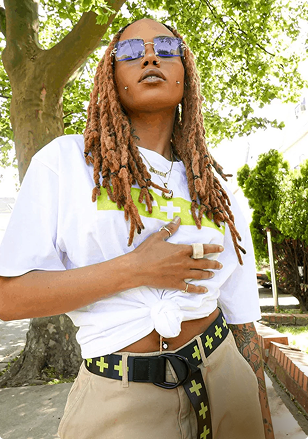

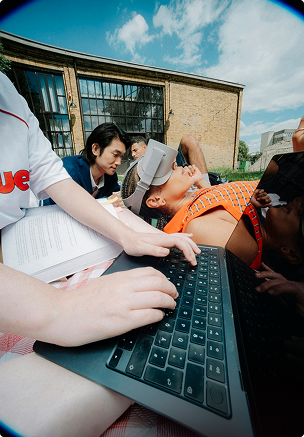

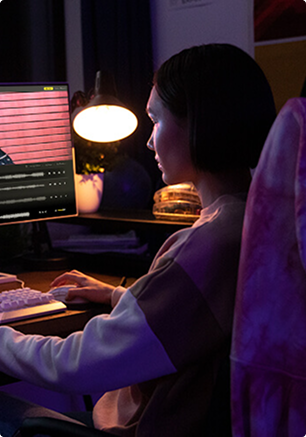

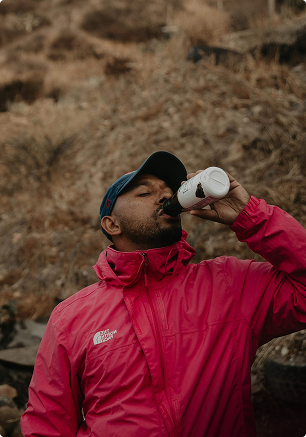
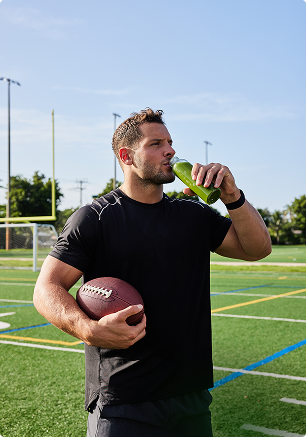







Influencer content production is the process of planning, creating, and distributing content in collaboration with influencers.
What started as a “nice-to-have” experiment is now a must-have strategy for enterprises aiming to build authentic connections, scale their reach, and drive measurable results.
But what’s behind this shift to influencer marketing, and why are global brands investing bigger budgets than ever?
Let’s break it down.
Influencer marketing is essential in 2025: Enterprises rely on influencers for scalable, localized, and authentic content production that outperforms traditional ads.
Key benefits driving adoption:
Top enterprise challenges
Solutions from Fieldtrip
Best practices for enterprises
Fieldtrip’s 5-step influencer content process
Future trends shaping enterprise influencer marketing
Results delivered by Fieldtrip
Conclusion: Influencer content production is no longer optional for global brands. With the right systems, teams can scale faster, stay compliant, and drive measurable impact. Fieldtrip helps enterprises achieve all three.
Big brands are pouring bigger budgets into influencer campaigns in 2025. Here’s why:
Influencer marketing is set to hit $32.5B in 2025 (up from $24B in 2024), and enterprises are driving much of that growth.
Why? Because large brands need content across dozens of markets, channels, and formats.
Influencers act as an external production engine, creating high-quality, localized content faster than an in-house team ever could. For global enterprises, scaling campaigns this way is efficient.
Nearly 80% of brands increased or maintained influencer budgets in 2025, with almost half boosting them by 11% or more.
A big reason: influencers bring granular knowledge of their niches.
Whether it’s beauty, fitness, or gaming, creators understand their communities in ways that enterprise teams can’t always replicate. For global brands trying to resonate with highly specific audiences, this reduces guesswork and improves campaign fit.
Enterprises struggle with being seen as “faceless corporations.” Partnering with influencers transfers their credibility and human touch to the brand.
On platforms like TikTok and Instagram Reels, their authentic voice consistently delivers higher engagement per dollar than display or banner ads. This makes influencer-led content more relatable and cost-effective.
Enterprises are data-driven, and influencer campaigns now plug directly into analytics platforms. That means brands can measure ROI, track creator performance, link spend to real business outcomes, and justify influencer marketing in boardroom terms.
Influencer marketing it’s a measurable marketing strategy regardless of the method you choose.
As David Morneau, CEO of inBeat Agency says, the best results come when influencers aren’t one-off hires but extensions of the enterprise marketing team. Their know-how complements corporate strategy and fills gaps internal staff can’t always cover.
Insider tip: One enterprise team we know uses social listening tools like Talkwalker to track trending topics. They pair those insights with influencer management platforms like CreatorIQ to find and vet the right creators. Then they turn everything into a campaign brief in record time. It’s smart, fast, and keeps content authentic.
Enterprises running influencer content production campaigns face a tricky balancing act: scaling across multiple regions while keeping brand voice, compliance, and efficiency intact. Unlike smaller brands, enterprises deal with complexities that multiply at global scale.
Large brands don’t just launch campaigns. Enterprises have to manage compliance across dozens of regions. From FTC disclosure rules to local ad laws and brand safety checks, every market adds another layer of legal and internal review. Without centralized governance, campaigns can stall or splinter.
Besides, not every influencer wants to follow FTC guidelines or other existing legislation, as Digiday explains.
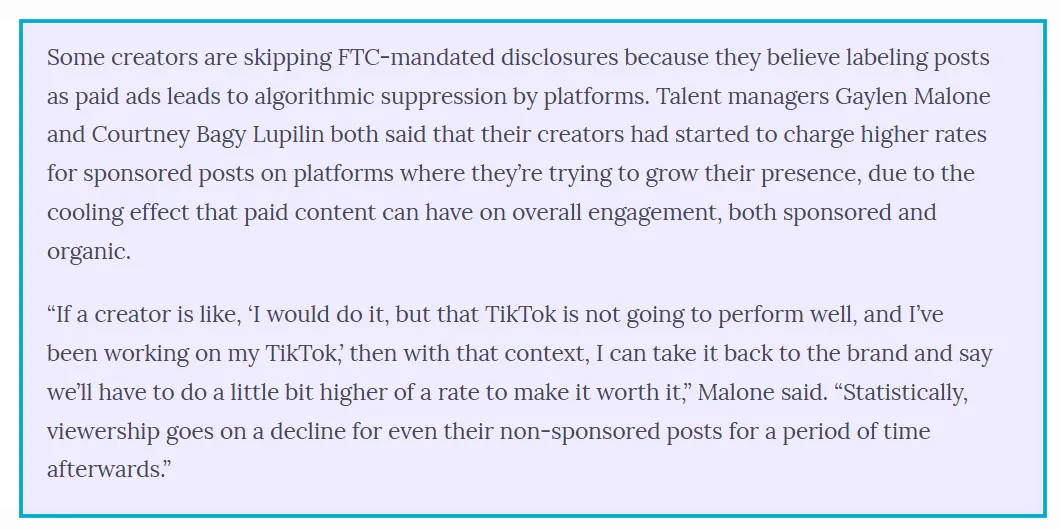
Your advertising agency should know how to tackle these issues so your company avoids penalties:
Global enterprises need content that works across 10+ markets, in multiple languages, and on multiple platforms. The real challenge isn’t just “producing content fast”. It’s keeping messaging consistent while avoiding duplicate efforts and siloed regional teams.
In fact, Traackr’s “Influence 2.0 Report” on over 100 global brands found that 80% of these companies have three or more departments working with influencer programs. That tells you how cross-functional coordination becomes non-negotiable.
Without coordination, enterprises burn resources on content that can’t be reused or adapted across geographies.
Enterprise teams can feel the pressure to scale quickly and cost-effectively, but rushing can turn influencer marketing into cookie-cutter content.
On average, businesses earn about $5.78 for every $1 spent on influencer marketing, but the top-performing campaigns (those that let influencers have more creative freedom) tend to beat this benchmark.
The challenge is finding a system that maintains efficiency while leaving space for influencers’ creative freedom. In this way, content feels truly authentic.
With influencer budgets climbing, enterprises face procurement hurdles that smaller brands don’t. Think lengthy approval cycles, rigid cost structures, and the need to justify spend across multiple business units. Securing better rates for high-volume influencer partnerships adds yet another layer of complexity.
That’s why we advise you to pick a full-service marketing agency for Fortune 500 brands to coordinate your influencer campaign. These companies have the experience, network, and processes to solve these issues.
Some brands negotiate master agreements with influencer agencies across business units to get better rates.
While there’s no Fortune 500 that made this public recently, multiple reports mention 71% of influencers offer discounts for long-term collaborations. That suggests big brands who commit longer term gain cost advantage.
Enterprises also run into unique talent challenges. Influencers may already be working with competitors or appear in overlapping campaigns across countries. That overlap risks diluting impact and undermining exclusivity agreements.
At the enterprise level, “measuring engagement” isn’t enough. Influencer campaign results need to tie back into Salesforce, HubSpot, Tableau, and broader marketing mix models. Proving ROI in boardroom terms requires deep data integration instead of following vanity metrics.
These are the exact challenges Fieldtrip helps solve through inBeat Agency. From centralized governance and vetted creator discovery to flexible production workflows, Fieldtrip provides the infrastructure enterprises need to scale influencer content without sacrificing compliance, creativity, or ROI.
If you’re looking to win at international marketing, this is a great start:
Scaling influencer campaigns globally isn’t just about translating content. It’s about localization, compliance, and cultural fit without losing the brand’s voice.
Take NielsenIQ’s global campaign: over 100 creators, 19 countries, and 15+ languages, all managed through a modular workflow that ensured brand consistency across borders.

Similarly, Hurom, one of our clients, uses multilingual influencer content (English, French, Spanish).
This content is amplified through SEO by partners like Blue Things for French Canada and Spanish-speaking U.S. audiences.
Here’s a good example:

Why does it matter?
Because audiences engage more with content that speaks their language, literally and culturally.
We bake audience insights and compliance checks into every campaign. Tools like Sprinklr and Talkwalker flag regional trends and sensitivities early.
Also, our creator vetting ensures alignment with local laws, brand safety, and industry standards. This is critical for sectors like FinTech and healthcare.
We use Clickup to organize vetting and even pre-vetting, like so:
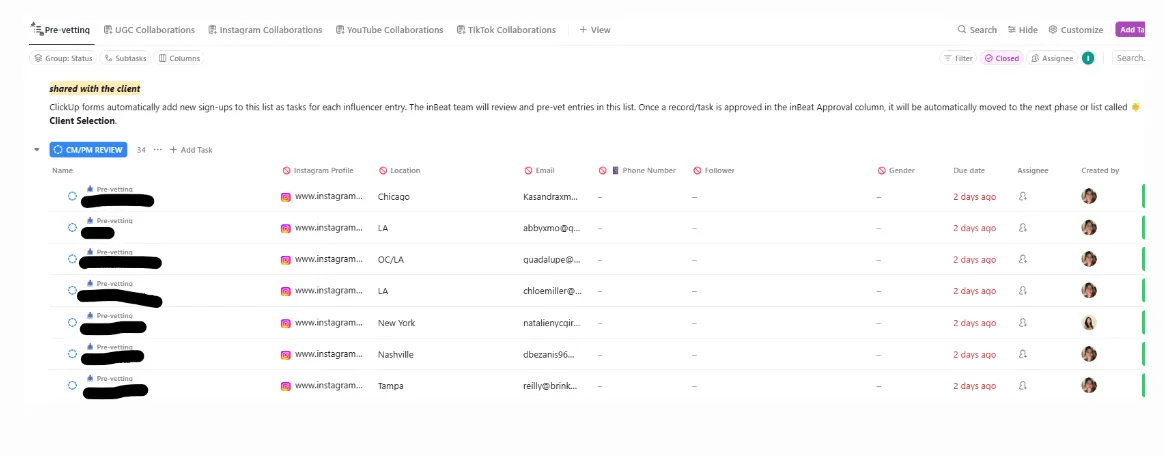
Employee-generated content (EGC) brings a layer of authenticity that even the best-matched influencers can’t always replicate. When employees share their own stories, skills, or behind-the-scenes experiences, the brand voice feels more human and relatable.
Take Papa John’s, for example: their chefs post TikToks showing off dough-spinning skills. This results in genuine, skill-led content straight from the people who live the brand every day.
Or Sanofi, where employees share self-shot videos about patient stories that cut through polished marketing with real emotion.
For enterprises, weaving EGC alongside influencer output boosts credibility, keeps engagement high, and reduces reliance on paid creator content alone. The result: a content mix that feels authentic, lowers costs, and builds trust at scale.
Enterprises wanting to lead with influence in 2025 must use smart, mixed, and measurement-ready strategies. The two levers we emphasize are:
Enterprises often ask us, “Should we invest in polished, cinematic influencer content or stick to raw, authentic videos?” The answer is a strategic mix in a lot of cases, though it depends on a case-by-case basis.
Here’s what to look for:
Key takeaways:
At Fieldtrip, we advise enterprises to use hi-fi content for flagship, brand-building campaigns and lo-fi content for fast, trend-driven amplification. This mix helps brands maintain credibility while staying agile and relevant on social media platforms.
Case studies from leading brands prove why this approach works:
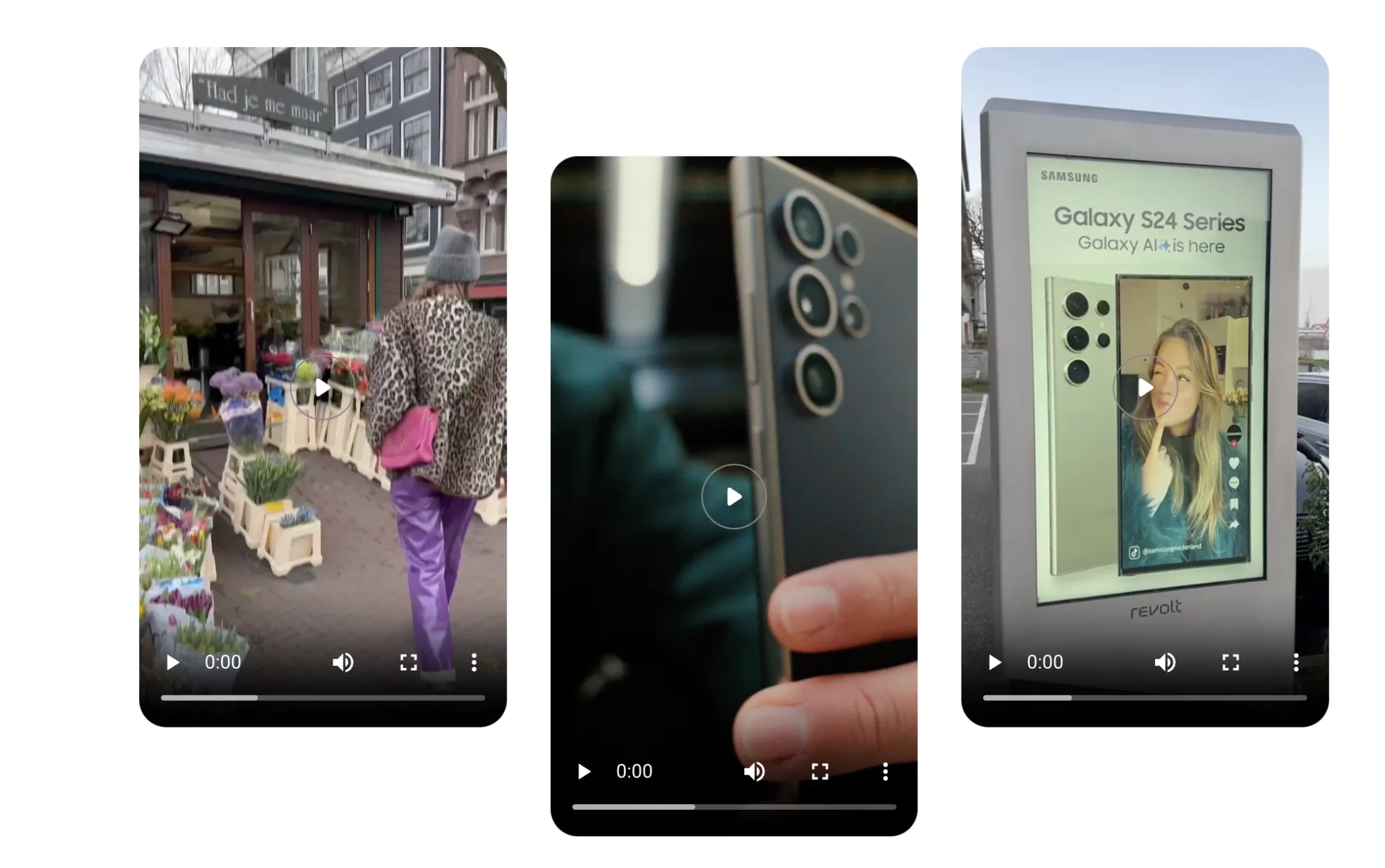
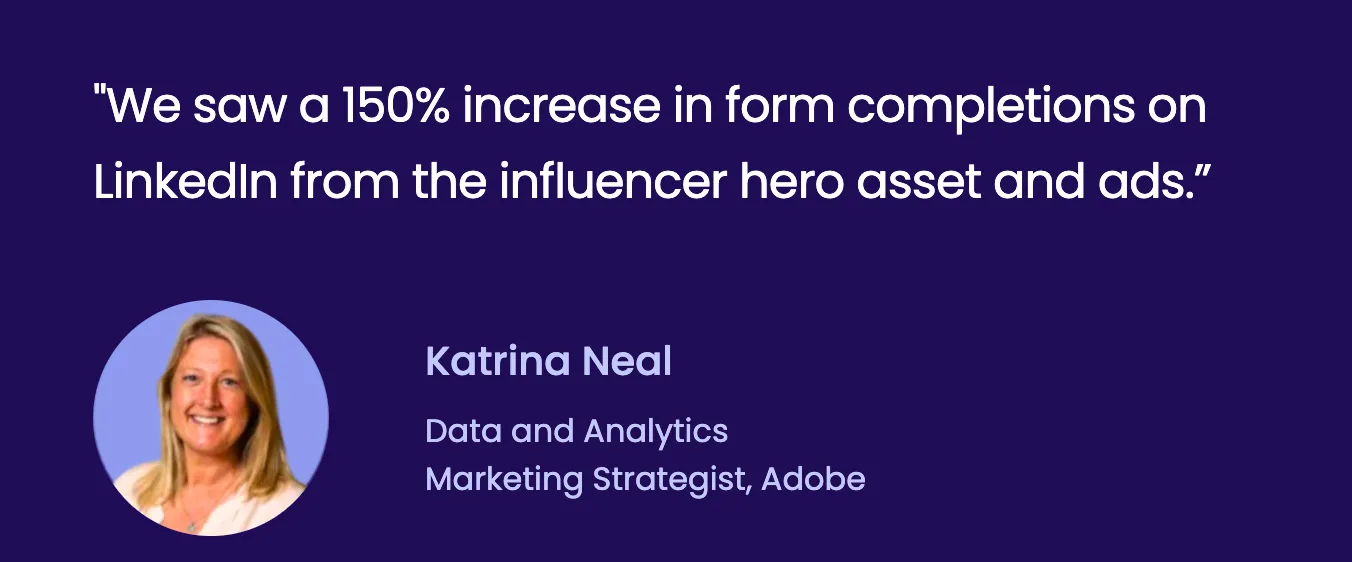
It’s results like these that show why balancing polished assets with creator-driven content maximizes reach, ROI, and audience connection.
Traditional ads can feel pushy. Social-first content, on the other hand, blends seamlessly into user feeds. This makes it feel like part of the experience rather than an interruption. Add influencer partnerships, and brands get authentic, engaging ads that audiences actually want to watch.
Daniel Wellington, for example, sold 1 million watches for over $228 million using this strategy.
In 2025, the enterprises leading in influencer marketing are those that combine AI efficiency with human creativity.
AI doesn’t just speed things up. It supercharges the entire influencer workflow from start to finish.
You can implement AI even from influencer discovery.
Tools like Modash and InfluencerMarketing.ai scan the global network of creators. Millions of creator profiles are scanned by audience size, engagement, demographics, and brand safety factors. This cuts vetting time in half.

Next comes workflow automation.
Platforms like Upfluence handle onboarding, contracts, and content tracking. This eliminates hours of manual back-and-forth.
Finally, content optimization tools like Predis.ai generate draft captions, creative ideas, and ad visuals. This helps teams deliver assets faster and more consistently, without losing brand tone.
The real power of AI technology isn’t just speed. It’s what that speed unlocks.
Efficiency comes first. AI takes over repetitive, time-consuming tasks like discovery, vetting, and brief generation. Now, enterprise teams can finally focus on strategy and creativity instead of admin work.
Then there’s predictive ROI. By analyzing past creator campaign performance and content creation trends, AI tools forecast engagement, reach, and even conversion outcomes. This helps brands make smarter bets before campaigns even launch.
And of course, scalability is the game-changer that enterprises need. AI lets you manage hundreds of creators across multiple markets without needing to triple the size of their marketing team.
AI drafts ideas, captions, and even ROI projections. Human oversight ensures brand voice, creativity, and cultural nuance stay intact. For instance, we often use Predis.ai for draft captions, then refine them with local insights and creative flair before launch.
Influencer marketing agencies like Fieldtrip constantly test new AI tools to boost efficiency, ROI, and creative quality. Our nimble team does just this. We share discoveries daily, and openly collaborate to test what actually works across influencer campaigns.
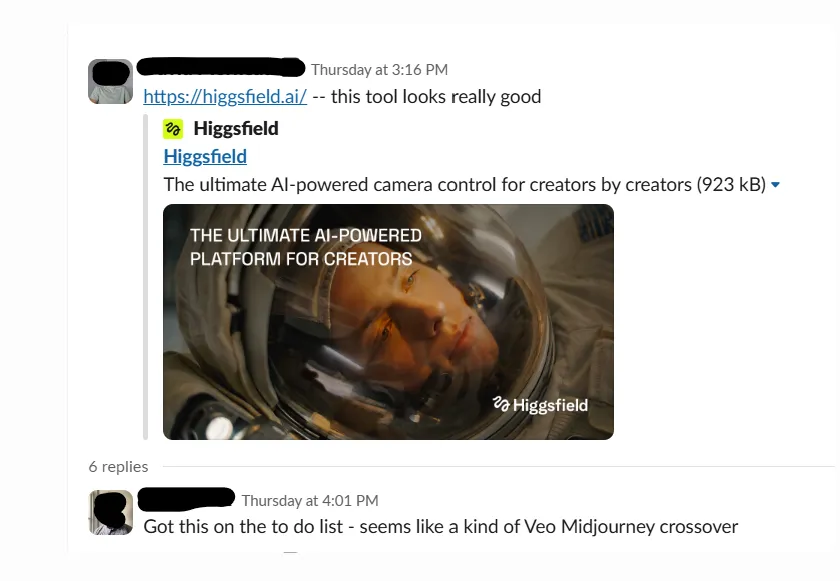
Here’s a look at two AI-generated ads we built for our client Shippity. We tested both using tailored hooks and eye-catching visuals, and the early results show they're already performing really well since launch.
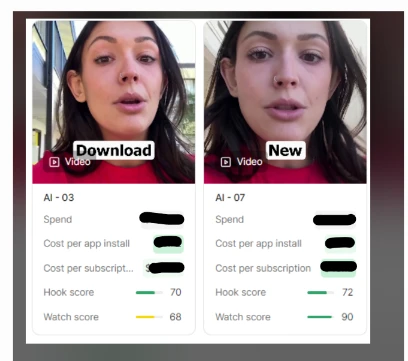
And as we said above, we also use GPT to generate a batch of hook ideas before any influencer marketing campaign development. Here’s how this works in practice:
Scenario: Let’s say Amazon wants to launch an influencer campaign for the Kindle Scribe. We’d target influencers across tech, productivity, and book-loving niches.
Below is how we might use GPT to ideate hooks for multiple creators:
From here, our creative services team shortlists the best hooks, blends them with brand messaging, and tailors delivery based on platform and persona.
We also use AI for research before campaigns, to explore marketing trends, audience interests, and emerging content formats across platforms. After launch, we use GPT to help analyze ad performance, sorting through comments, engagement metrics, and identifying which creative elements performed best.
When enterprises ask which metrics actually matter for influencer campaigns, the answer goes way beyond likes and follower counts. Vanity metrics look good on paper, but they don’t prove ROI. Instead, here’s what global brands really track:
Likes and follower counts can mask deeper insights. Without tying campaigns to ROI, conversions, or brand lift, enterprises risk celebrating engagement while missing real growth opportunities.
Centralizing these metrics into one real-time dashboard keeps enterprise teams aligned across regions and campaigns.
Our creator-led campaign for Nestle’s Nuun shows the power of measuring beyond vanity metrics.
By tracking these marketing metrics, Nestle could confidently scale its creator-led strategy for future campaigns. For example, we tied campaign data directly into their CRM and retail dashboards.
This showed us how many people liked or shared content, as well as which creators actually influenced add-to-cart behavior and repeat purchases.
Mapping UGC performance against sales lift is how we identified the top 20% of creators who drove over 70% of the campaign’s revenue impact.
That allowed Nestlé to double down on high-performing partnerships, reallocate budget away from vanity metrics, and build a repeatable playbook for creator-led activations at scale.
Insider tip: Always set up UTM tracking, affiliate links, and brand lift studies before launch. This allows performance data to flow in as campaigns go live.
Scaling influencer campaigns globally takes more than tools. It takes a refined, repeatable process.
At Fieldtrip, we help enterprises go from strategy → sourcing → production → scaling → measurement without losing brand safety, creative quality, or ROI visibility. Here’s how:
We start by understanding your campaign goals. This includes brand awareness, acquisition, or product launches. We then layer in audience insights and social listening to shape localized, platform-specific content briefs.
For example, Nestle needed to increase awareness for its Nuun tablets, which is why we focused on TOFU content:
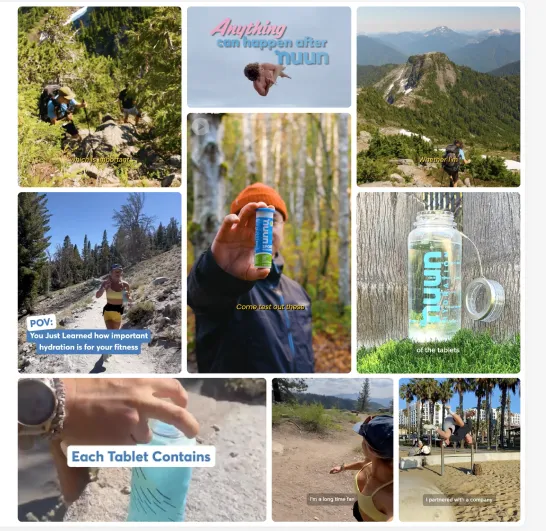
We use influencer discovery platforms, but we combine AI-powered discovery with human curation.
Our specialists don’t just rely on these platforms’ algorithms.
They also conduct manual research, browse online for niche profiles, and tap into their personal networks of influencers.
This hybrid approach ensures that your creators meet compliance, brand safety, and engagement benchmarks. We also make sure they align authentically with enterprise goals; a process especially critical in regulated sectors.
Centralized, SEO-optimized briefs guide creators on hi-fi vs. lo-fi mixes, messaging, and usage rights. We use tools like Frame.io to streamline reviews and content approval for consistent, on-brand content creation at scale.
We integrate localization tools and QC checks so content feels native to each market while keeping a unified brand voice. Modular assets speed up adaptation for different languages and platforms.
From day one, we implement UTMs, affiliate links, and real-time analytics dashboards to track KPIs like reach, conversions, and brand lift. High-performing assets are repurposed into ads, blogs, or web content to maximize ROI.
Global brands choose Fieldtrip because we:
Insider tip: Test workflows first. Run a pilot campaign with 3–5 creators to refine briefs, localization, and analytics pipelines before scaling globally.
In 2025 and beyond, influencer marketing is no longer a passing trend. Influencer content production is a core pillar of enterprise marketing. The future belongs to brands that combine scalability, creativity, AI innovation, and measurable ROI into one seamless system.
Future-ready enterprises will:
Influencer content production is no longer optional. It’s mission-critical for enterprises aiming to lead in 2025.
The bottom line:
Enterprises face unique challenges in scaling influencer campaigns, from compliance and cross-market coordination to cost structures and ROI tracking.
Fieldtrip helps solve these complexities through inBeat Agency, combining AI-powered discovery, manual vetting, and flexible workflows to make global influencer content production seamless.
Ready to unlock the next era of influencer marketing?
Partner with Fieldtrip to build a future-ready engine powered by AI, driven by real creators, and built to deliver ROI at scale. Let’s grow your brand with influence that actually moves the needle.
1. How do enterprises manage influencer content production across multiple regions?
Enterprises use platforms like CreatorIQ or Traackr for centralized influencer identification, content briefs, and campaign workflows. A global team ensures brand voice and compliance, while regional teams adapt assets for language and culture. Tools like Talkwalker help surface local trends so content creation stays authentic yet aligned with global messaging.
2. What budget ranges should enterprises expect for large-scale influencer content?
Budgets depend on influencer tier, region, and campaign scope. PR Newswire reports nano creators average $211 CPM, while micro influencers can exceed $119 CPM. For 10+ markets, we recommend starting at $250K+ to cover creator fees, production, localization, paid media, and real-time analytics.
3. How long does it take to see measurable ROI from enterprise influencer campaigns?
Most enterprises see early metrics like engagement and traffic in 4–6 weeks, but full ROI and conversion data often need 60–90 days or one full sales cycle for accurate reporting. Campaign management and brand goals also influence your ROI.
4. Can influencer content production replace traditional enterprise advertising?
No, it complements it. Influencer-led content excels at awareness and engagement, while enterprises typically integrate it with paid social, display, and owned content for full-funnel campaigns rather than single-channel strategies.
5. How do enterprises ensure brand safety when working with dozens of influencers?
Enterprises combine vetting tools with manual content reviews, strict brand guidelines, and AI-powered monitoring for language, sentiment, and disclosures to maintain brand safety at scale.
6. How does Fieldtrip approach influencer sourcing differently for enterprise clients?
We blend creator discovery platforms with human-led curation. We use analytics, cultural checks, and strategy alignment to ensure creators fit brand tone, legal requirements, and regional nuances. We focus on factors that go beyond just follower counts.
7. What results has Fieldtrip delivered for enterprise influencer campaigns?
Fieldtrip has delivered measurable results for enterprise influencer campaigns. For NielsenIQ, we coordinated over 100 creators across 19 markets and 15 languages, driving a significant brand awareness lift. For Hurom, multilingual campaigns in English, French, and Spanish boosted engagement and product visibility. Meanwhile, Nestle achieved a lower CPA and 30% more engagement compared to traditional paid ads, supported by full analytics tracking for clear ROI measurement.